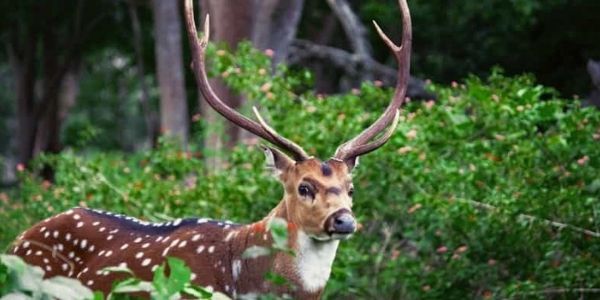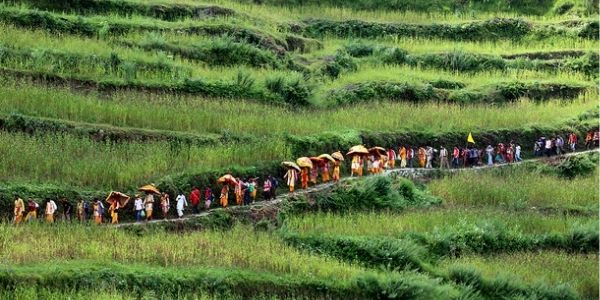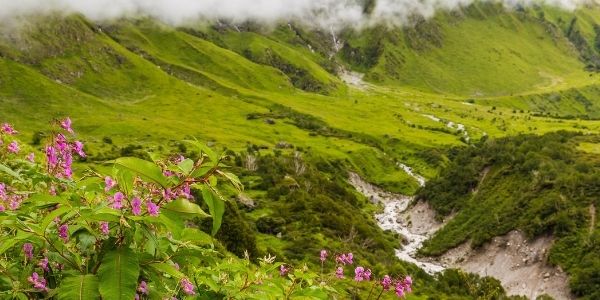To begin with, there are many essential concepts one must cover for the IAS exam. The IAS exam is famous for its syllabus. Therefore, we are trying to cover all important topics to help you with the IAS exam preparations. Further, in the article, we have added all vital information related to the Biosphere Reserves in India. You will find all details like UNESCO Biosphere Reserves in India map and understand the total Biosphere Reserves in India. As we all are aware about the UPSC exam, it is normal to get tense about the exam. There are many things to cover for the UPSC exam, but one can quickly clear the exam with a proper plan. In addition, one must visit the official website to get the latest information related to the exam. Let’s begin.

About the Article
In this article, we will be talking about the Biosphere Reserves in India. The Biosphere Reserves is an international designation by United Nations Educational, Scientific, and Cultural Organization (UNESCO). Besides, Biospheres tries to balance economic and social development and maintenance of associated cultural values and the preservation of nature. Further, The biosphere reserve network was launched in 1971 by UNESCO. According to July 2021, there are 714 Biosphere reserves across 129 countries globally, including 21 transboundary sites. Besides, reading the below article will provide all information related to the exam.
UNESCO Biosphere Reserves in India
Further, the Indian government established 18 biosphere reserves to secure more prominent areas of natural habitat than a typical national park or animal sanctuary, which often consists one or more national parks or reserves, including buffer zones that are open to some economic uses. Besides, a site should be protected and minimally disturbed core area of nature conservation value. Further, it must be large enough to sustain viable populations representing all trophic levels. Besides, local communities have no involvement and use of their knowledge.
Structure of Biosphere Reserves
Talking about the structure of the Biosphere Reserves in India, there are some points to be taken care of are:
- Core Areas
- It is the most protected area and it may contain endemic plants and animals. Further, they conserve the wild relatives of economic species and also represent essential genetic reservoirs having exceptional scientific interest.
- Later, the core zone s a protected region, like a National Park or Sanctuary/protected/regulated mostly under the Wildlife (Protection) Act, 1972.
- Buffer Zone
- Further, the Buffer Zone is surrounded by the core zone. All activities are handed by the in this area in the ways that assist in the protection of the zone in its natural condition.
- Besides, it includes restoration, limited tourism, fishing, grazing, etc; which are permitted to reduce its effect on the core zone.
- Transition Zone
- Further, it is the utermost part of the biosphere reserve. It is the zone of cooperation. Further there are human ventures and conservation are done in harmony.
- Later, includes ettlements, croplands, managed forests and areas for intensive recreation and other economic uses characteristics of the region.
Functions

First, let us now understand the functions of the Biosphere Reserves.
- It is responsible for managing Biosphere Reserve’s genetic resources, endemic species, ecosystems, and landscapes when it comes to Conservations.
- Further, it also prevents man-animal conflict, e.g. the death of tiger Avni who was shot dead when she turned man-eater. Then, the culture and customs of tribals are also protected.
- Later, it also promotes economic and human growth that is sustainable on a sociocultural and ecological level. Further, strengthen the three pillars of sustainable development: social, economic, and protection of the environment.
- Further, it also promotes research activities, environmental education, training, and monitoring in the context of local, national, and international conservation.
Biosphere Reserves in India
- Cold Desert, Himachal Pradesh
- Nanda Devi, Uttrakhand
- Manas, Assam
- Nokrek, Meghalaya
- Panna, Madhya Pradesh
- Pachmarhi, Madhya Pradesh
- Kachchh, Gujarat (Largest Area)
- Similipal, Odisha
- Sundarban, West Bengal
- Seshachalam, Andhra Pradesh
- Nilgiri, Tamil Nadu-Kerala (First to be Included)
- Gulf of Mannar, Tamil Nadu
- Great Nicobar, Andaman & Nicobar Island
Further, there is a total of 11 biospheres Reserves of India that are recognized internationally.
- Nilgiri (First to be included)
- Gulf of Mannar
- Sunderban
- Nanda Devi
- Nokrek
- Pachmarhi
- Similipal
- Achanakmar – Amarkantak
- Great Nicobar
- Agasthyamala
- Lastly, Khangchendzonga

Besides, below we have added details of the Biosphere Reserves in India map according to the different states.
| YEAR | NAME | STATES |
| 2001 | Gulf of Mannar BR | Tamil Nadu |
| 2001 | Sundarbans BR | West Bengal |
| 2004 | Nanda Devi BR | Uttarakhand |
| 2009 | Pachmarhi BR | Madhya Pradesh |
| 2009 | Nokrek BR | Meghalaya |
| 2009 | Simlipal BR | Odisha |
| 2012 | Achanakmar-Amarkantak BR | Chhattisgarh |
| 2013 | Great Nicobar BR | Great Nicobar |
| 2016 | Agasthyamala BR | Kerala and Tamil Nadu |
| Lastly, 2020 | Panna BR | Madhya Pradesh |
International Biosphere Reserve
Further, UNESCO has introduced the designation ‘Biosphere Reserve’ for natural areas to minimize conflict between development and conservation. Besides, Globally, there are 686 biosphere reserves in 122 countries, including 20 transboundary sites.
Further, below we have added details of the Biosphere Reserves across the World.
- 85 BR in 31 countries in Africa
- 33 BR in 12 countries in the Arab States
- 157 BR in 24 countries in Asia and the Pacific
- 302 Br in 38 countries in Europe and North America
- Lastly, 130 Br in 21 countries in Latin America and the Caribbean.
Important Points on the IAS Exam
Further, we will talk about all information related to the IAS exam. The IAS exam is held by the UPSC every year to recruit IAS officers. Then, in the IAS exam, there are three rounds.
- Preliminary Exam
- Main Exam
- Lastly, Interview Round
In the preliminary exam, there are a total of two papers that are objective type. Further, in the main exam, nine papers are descriptive types. Besides, those who all clear the main round can give an interview round. Further, for more information on the IAS exam, one can go through the official website. Click Here. It is essential to visit to get the best results in the exam. Further, one must follow up on essential tips to get the best rank in the IAS exam. First, one must go through the last year’s question papers to help you with the exam.
Further, understand the exam syllabus and the paper pattern. Also, know which are the best books for all subjects of the IAS exam. In addition, while choosing the optional subject one must learn their skills and interests. Therefore, it is good to go through the syllabus before selecting the optional subjects. Later, make the best use of available time and give time for all subjects. Further, it is not like any other exam. One must work hard and put in all efforts to get selected as the competition is high if you want to shine, work hard and achieve your goals.
Further, get all information related to the IAS exam. We have covered all the vital things that are required for the exam. Read More
Conclusion – UNESCO Biosphere Reserves in India
In summary, from the above article, you will find all information related to the UNESCO Biosphere Reserves in India and know Biosphere Reserves in India map and other essential information on the same. Further, knowing the total Biosphere Reserves in India, we have added details of all BR present across the nation. As a part of the UPSC study materials and the IAS main exam, one needs to know about the Biosphere Reserves in India. Further, get information on the other UPSC exam study materials here. Read More. Later, many students apply for the IAS exam every year, including working professionals. Then, many aspire to become the nest IAS officers. However, it all depends on your hard work and your efforts.

FAQs
18 Biosphere Reserves in India
Gulf of Kachchh is the largest biosphere reserve in India
The Nilgiri Biosphere Reserve is the 19th BR in India.
Editor’s Note | Biosphere Reserves in India
In summary, the above article will give you all information related to the Biosphere Reserves in India Map. It is essential for the IAS exam, and we have added all the necessary details that are important for the IAS exam. We have been covering all the important concepts that are important for the IAS exam. Further, one must also go through the previous year’s question papers to understand the paper syllabus and the pattern. Later, it is also important to give mock tests to know your skills and to improve them.
Further, as we always mention, it is essential to maintain a separate book to write down all the points, and you can read the same during the exam. However, there are many students applying for the exam. But, we have seen many students who have cleared the exam without coaching classes. Therefore, understand the paper pattern and practice well for the exam. Lastly, we wish you good luck with the exam. Try to use all tips that are mentioned above, and it will help you to get the best results in the exam. All the best.






